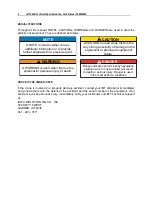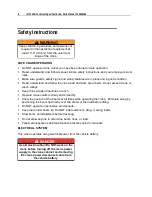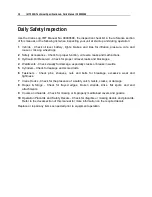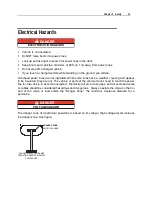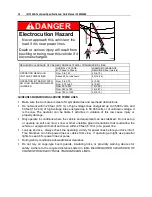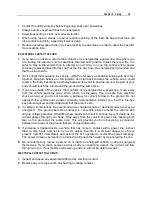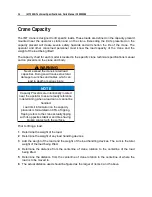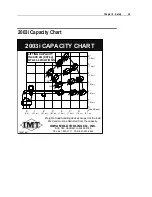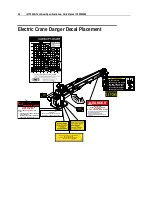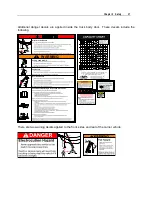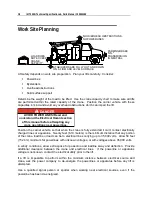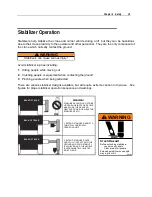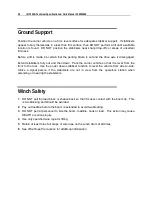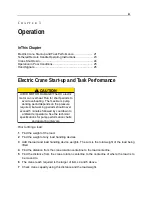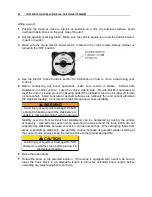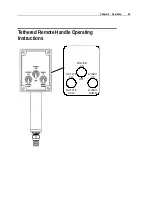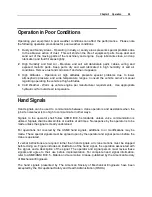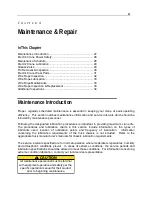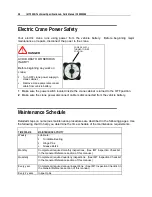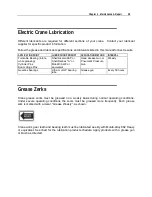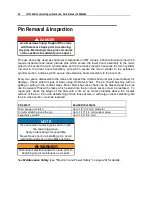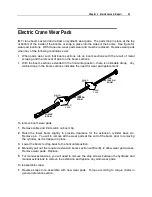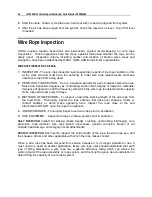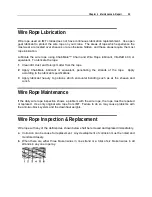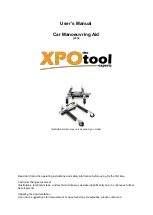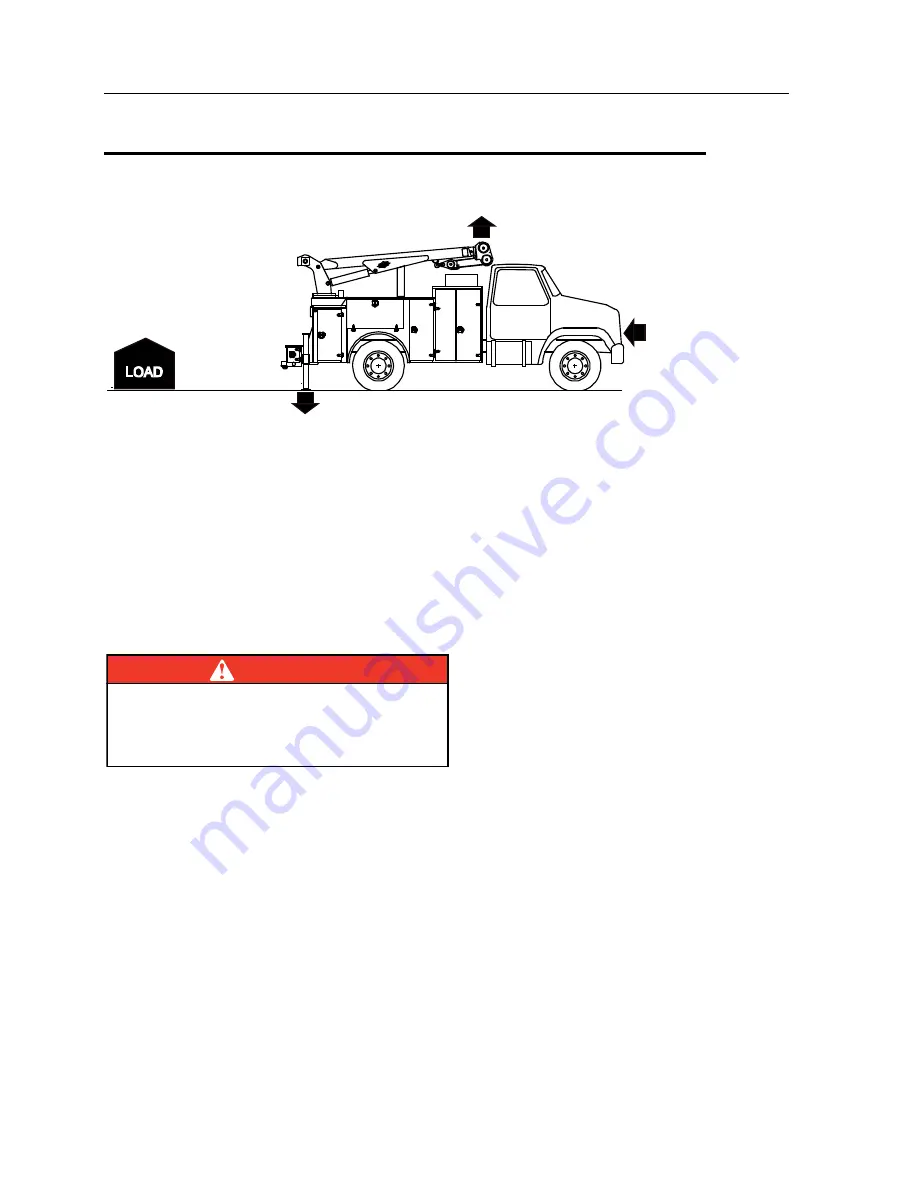
18
IMT 2003i Technical Specifications & Parts Manual # 99904385
Work Site Planning
LOAD DOES
NOT EXCEED
CRANE
CAPACITY.
STABILIZERS ARE FULLY OUT AND DOWN
ON A FIRM AND LEVEL SURFACE.
NO OVERHEAD OBSTRUCTIONS.
NO POWERLINES
PARKING BRAKE
"ON."
TRANSMISSION
IN NEUTRAL.
Lift safety depends on work site preparation. Plan your lifts carefully. Consider:
Powerlines
Bystanders
Overhead obstructions
Solid surface support
Determine the weight of the load to be lifted. Use the crane capacity chart to make sure all lifts
are performed within the rated capacity of the crane. Position the carrier vehicle with these
capacities in mind and avoid any overhead obstructions which can impair the lift.
DANGER
AVOID POWER LINES! Read and
understand the Electrical Hazard section
of this manual before attempting any
crane operations near powerlines.
Position the carrier vehicle so that when the crane is fully extended it can't contact electrically
charged lines or apparatus. Twenty feet (6.10 meters) is the minimum distance that any portion
of the crane, loadline or load can be to electrical lines carrying up to 35,000 volts. Allow 50 feet
(15.24 m) minimum for powerlines with unknown voltages, or with voltages above 35,000 volts.
In windy conditions, allow extra space for powerline and loadline sway and deflection. Provide
additional clearance between the crane and electrical lines. If the powerline or apparatus
voltage is not known, contact the electrical utility prior to the lift.
If a lift is impossible to perform within the minimum distance between electrical source and
crane, ask the power company to de-energize the powerlines or apparatus before any lift is
attempted.
Use a qualified signal person or spotter when working near electrical sources, even if the
powerline has been de-energized.
Summary of Contents for 2003i
Page 2: ......
Page 6: ......
Page 38: ......
Page 77: ...Chapter 8 General Reference 75 X R CA ITEM EXPLANATION DATE CORRECTED ...



